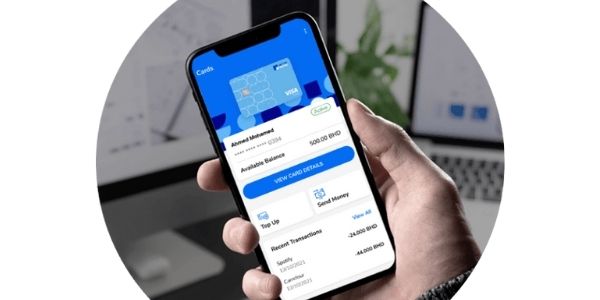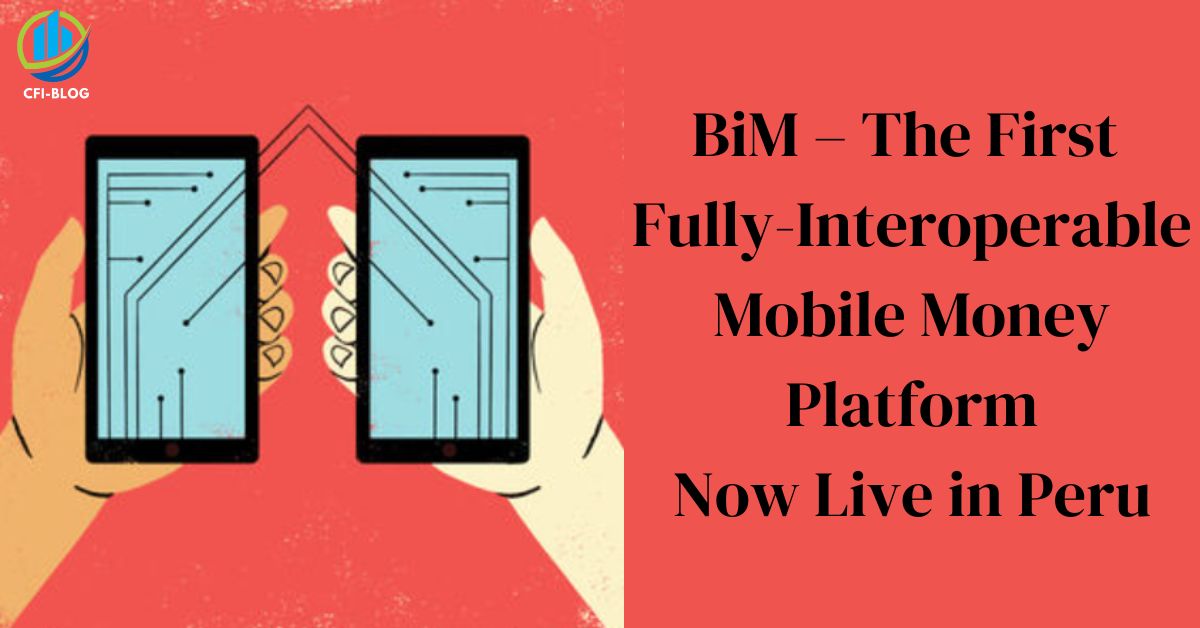The Success of Mobile Money platforms in other geographic locations has made Peru launch its mobile money platform Buy it Mobilility (BiM). This platform has around 30 major banking and telecommunication partners. With the help of this, a consumer can send money to a different account in a different bank, or you can send money to someone using a different mobile network.
Prior to BiM, there were other payment platforms as well that were launched by the Peruvian government, but all of them couldn’t solve the issue of transferring money to different banks, or other mobile operating networks. There was even a major player in the industry as well, M-pesa, but they also couldn’t survive in the region. The reason M-pesa failed was due to its flawed business model. So, BiM has gained success in Peru due to its adaptive nature and not following what other companies did. Let’s see How BiM survived and gained massive success.
What are Mobile Money Platforms?
Mobile Money Platforms allow you to pay from your mobile phone via a mobile application. According to IMFs Financial Acess Survey, e-payments follow a model of the pay-as-you-go. Mobile money platforms allow you to exchange money, store money, etc. They progress through a set of mobile networks and mobile money agents. This service is made possible by the partnering up of mobile networks or some other entity and traditional banking network.

To use a mobile money service you do not need to have a bank account as such, all you need to have is a basic mobile phone. A smartphone is required, as the process takes place with the help of a mobile application, for example, BaganMart, Myanmar’s first e-commerce platform. The apps help you to make use of all the functions that a basic bank account has, such as check deposits, payment transfers, check balances, etc.
Some banks provide mobile banking services in their apps, but they are different from mobile money apps. Mobile money apps do not require any bank account to function. With the help of mobile money, users can buy products online, pay bills online, recharge mobile payments, etc. You can withdraw cash via mobile money platforms from designated agents. To pay someone or purchase something, a user can select any mobile money app from the menu, type in the amount that they have to send, and then send it.
In fact, it works just like a text. However, in this case, you will be sending money to someone. Mobile money apps store the money in electronic accounts linked to your mobile number. The electronic account is encrypted, making it truly secure. Despite that, financial inclusion in Nigeria lagging when it comes to digital payments.
Your electronic account has a wallet number; in some cases, the mobile number is the wallet number. However, that is not compulsory. Always check with your recipient and cross-check the wallet number to which you are going to send money to avoid any fake payments.
A mobile money platform works just like a bank account. The money stored in mobile money platforms is protected by local financial regulations. Many mobile money apps use photo identification and other things to verify any user and then allow them to create an account. This prevents any kind of fraud and malpractice.
The Mobile Money app has a record of every transaction that is done by the app, so even if your phone is lost or stolen you can keep track of every transaction that was done when you didn’t have the phone with you. In addition, for every transaction that will take place you have to put in a pin to complete the transaction.
Benefits of Mobile Money Platform
There are multiple benefits of mobile money platforms, which is why it is been widely accepted by people all over the world.
1. Reduce Expenses
Mobile money apps are very accessible and cost-effective. You can save tons of money by using a mobile money app. You don’t have to go to any ATM machine to collect cash and then pay money, you can just pay using the money mobile app. You will save on transportation. You should not wait for a check to arrive and then cash in a bank, you can simply provide the depositor with your wallet number or account number and then the depositor with the help of the credentials you gave can easily send you money.
There is hardly any kind of fees related to mobile money apps, and it is very cheap in comparison to fees charged in regular banks. With the increase in drastic financial situations, like the student loan situation in the US, saving money should be of utmost importance.
2. Improve Cash Flow
Using Mobile Money apps increase cash flow if some depositor transferred money to your account via mobile money apps, the money is received almost instantaneously. With this rapid transfer of money, every user will be using these apps.
Now as the money is received by this app most users will not hesitate to send money to someone via these apps. This will result in an increase in cash flow in the country. Moreover, the transaction takes place with the help of an app so all you need is a mobile phone for transferring money. This makes it very accessible for users to send money or receive money.
3. Easily Integrate Loyalty Programs
Users using the apps have a record of every transaction done by them, so it is easy to send or receive rewards to your account. You can get various coupons or discounts on every purchase you make with this mobile app. Rewards or coupons may include:
- Points Loyalty Programs: On every purchase or transaction your account receives a designated point, now you can redeem exciting gifts when you have collected a certain number of points.
- Tiered Loyalty Programs: There will be a set number of purchases if you complete this many numbers of purchases you will be able to receive some type of gift or discount coupon.
- Hybrid Loyalty Programs: This type of reward program is a mix of both types mentioned above. You can win points if you purchase a certain number of products.
4. Get Insights into Actionable Data
When you use a mobile money app you can details of all your transaction. You can see at what time you made this transaction, where you spent money, on what products you spent money, etc. with all this information you can track your spending. You can create a budget according to the details present in your Mobile money app. Creating a budget and following it can significantly save you money.
5. Better Payment Security
The security aspect of the mobile money app is pretty solid too. These apps have encrypted/protected coding to shield the personal data of the customers. Your personal credentials are in a safe place when you are using a mobile money app. You can see all transactions that have taken place so you can verify whether all the payments done by you are by someone else. Lastly, even if your phone gets stole or lost, to make a transaction with a mobile money app, an intruder must have your security pin to complete the transaction.
6. Simplify Bookkeeping
Using a Mobile money app simplifies bookkeeping. As this kind of mobile app has data on all the transactions. It has a record of every type of payment such as purchases, bill payments, etc. with the help of this type of information you can keep a record of the following:
- Sales information
- Payment records
- Inventory updates
This type of information just enhances the user experience. It keeps the user hooked as the user gets all the beneficial information in one place.
Pros of Mobile Money Platforms
Here are some pros of a mobile money platform:
- Pervasive – In the case of mobile money apps you can pay utility bills, school fees, taxes, etc. With this app, you can purchase any goods online or offline, and you can send money to your friend or relative almost instantaneously. You can check your balance and track your spending. You can do almost everything a bank does, but faster and more easily.
- Cheap – Using mobile money apps are very cheap. Especially, in developing countries or the fastest developing countries like India, preventing many a cautionary tale to India’s financial inclusion push. In the case of traditional banks, you have to reach the bank to cash in a check or withdraw money from an ATM machine with your debit card, in both cases there will a charge or a fee that you have to pay to get money. However, in the case of mobile money apps, all you have to have is a mobile phone and then you can pay or receive any payment.
- Safe – Mobile money apps are safe to use. It has encrypted coding to stop hackers get your account credentials. All the transactions are secure as they come under the Consumer Financial Protection Bureau (CFPB), in the U.S. On top of this in case of any payments, there is a security PIN that you have to put in to complete the transaction. However, make sure to not share any of your bank credentials with anyone to stop any kind of fraud.
- Accessible – Using a Mobile money app is way easier than using a traditional bank. A bank is open for a limited number of days, it is closed on various national holidays, and if you are an employee it will be very hard for you to get to a bank as it is open for limited hours. However, a mobile money app can be used for 24 hours every day, and you can transfer money to anyone at any moment in time. You can access your bank details at any given point in time. This makes mobile money apps more accessible than traditional banks.
Cons of Mobile Money Platforms
Let’s go through a few cons of MMPs:
- Security – Well, there is security to your banking credentials, but you have to be very cautious about whom you send your bank credentials to receive any type of payment. As if your banking credentials are sent to the wrong person, they will have access to your banking credentials. There is a high chance you may get messages or an email of payments, you should never reply to any message as they are frauds.
- Availability – To use banking facilities with your mobile app. You should download the app beforehand. To use the app you need to have a Smartphone. Some of the apps need a high-end smartphone for the app to support.
How Did BIM (Buy It Mobility) Begin?

To make the first mobile payment system in the country Peru, the government of Peru partnered up with more than 30 financial Institutions and some mobile networks to begin the Mobile money payment platform. This program was initially started to address the problems of the common Peruvian population that didn’t have access to a formal account. To become a user of the mobile money platform, a user had to pay a small fee.
With the help of this platform, the Peruvian population could make cashless payments anywhere to anyone. You could use this platform to buy any product or pay any kind of bill online. Even in the country of Colombia, it is been seen that fintech for financial inclusion is the path forward for Columbia. A survey was conducted in the country by the government, and the survey showed that around 9 million Peruvians did not have access to any kind of bank account, this program was initiated to target at least 5 million of that population.
When it was launched the initial target of BiM was around 8,000-10,000 people, but after the launch and its success, the number rose to 23,000 people within 1 month. According to reports published by BiM, around 2.1 million people are going to be regular users of this Payment platform.
The Peruvian government had the plan to expand the cashless payment system throughout the country. In the year 2013, the government passed a law stating, that the government will stimulate the payment system by simplifying the regulation process for some online accounts. This law was passed, as they wanted more and more online accounts. The payments platform BiM was in progress at that time, in the year 2015, it was the month of August, and the government published the National Strategy for Financial inclusion.
Now, this program was launched to expand financial inclusion in the country. Around 75% of the population didn’t have any access to a banking account. The government saw that around 65% of that 75% unbanked population had a smartphone, and due to this, they came up with a mobile money platform. The idea behind this was to include the unbanked population and give them access to a formal account.
BiM is the mobile money platform that the Peruvian government came up with, BiM has over 30 financial institutions and a large number of telecommunication centers as its partners. BiM has partnered up with three major mobile networks in Peru, and some of the major banks. This program comes under the PDP (Peruvian Digital Platforms). All of this is owned by the Association of Banks of Peru (ASBANC), they are the largest shareholder and the main coordinator of this program.
BiM can be used by all the major smartphones which are supported by the 3 major mobile networks. Users can be of any of the 26 financial entities. This platform allows people to transfer money, receive money, etc. You get all the features that a regular bank offers, you can check your balance, and keep track of your spending. As traditional banks have ATM machines, with the help of BiM you can withdraw money from 10,000 money withdrawing stations which are spread across the country. To send money to someone is just like sending a text to someone it is that much easy. Paying with the help of this platform is easy and cheap.
The process had quite a bit of a hurdle, before BiM was launched the Peruvian government had launched some mobile money platforms as well. The problem with those kinds of mobile money platforms was that they were focusing on only one bank or one mobile network. A user could not send money to a different mobile network or a bank, and this created problems for the consumers as there was a limitation to these kinds of Mobile money platforms.
However, BiM had a different approach, it partnered with 30 banks and some of the major mobile networks. So, all the consumers can send money to different mobile networks, and different banks. As many bank and mobile networks were a part of the BiM, all others left also started joining BiM as they were feeling left out. Using BiM is way more cost-effective than Traditional banks, for each payment you make on BiM you will be paying a small charge, which is very nominal compared to other banks. The unbanked Peruvian population, in the urban centers, is around 60%.
So, there is a large number of people that do not have a bank account. The Market Size of BiM is huge, in the coming years the fintech industry will just increase and grow big. On top of this, BiM had to change the perception of the local people who had a misconception about mobile money platforms. However, a large population of the unbanked is a part of BiM today, So, it can be considered a success.
The Sucess of BiM has even raised comparisons with the Market head M-pesa. M-pesa which was launched in 2007, has consumers all over southern Africa. In the year 2014, the payment platform had over $656 million worth of transactions. Despite all this growth, the maximum population of Africa is still unbanked. This is because M-pesa follows a payment model that has a lot of costs included. All the payments are processed and authorized by their designated agent.
So to gain profit from this type of model will require a huge volume of transactions that is basically impossible. Due to this model, M-pesa was not able to earn any kind of profit. With these kinds of problems faced by many mobile money platforms, BiM had learned and fixed all these flaws in their business model. Due to this the Payment Platform BiM are profitable since the year 2019.
Lessons Learned by the BiM Payment Platform
There are around 23 major financial entities partnered up with the BiM payment platform. Banco de la Nación, the biggest bank in Peru is also on board with this platform. Even some of the major telecommunications and mobile networks have also partnered up. According to the report published by BiM, there is an increase of 30% in payments every month, it will reach 1 million this year.
After eight months, a survey was conducted by the PDP. The survey focussed on the distribution network, and the survey revealed that the problem needs to be resolved before expanding the company. The major problem was the need to have an alternative method of depositing cash, as every consumer should get to an agent to make deposits, which becomes less convenient for the consumer. The major learning learned since the launch of BiM is:
- The Advertising Campaign Does Not Work
The PDP found that spending the budget on advertising was expensive for the company, and this was pulling the company down.
To increase consumer engagement, BiM started giving away rewards and incentives to its users for using their platform for payments. This reward strategy was more valuable to the company in engaging its consumers rather than advertisements. So, for two years the company did not spend any money on advertising. The company decided that they would start advertising, after acquiring 1 million active users.
- Focus Outside of Rural Areas
PDP has learned that focusing on customers in rural areas rather than focusing in pre-urban areas is turning out to be loss-making. It will take almost two years, to integrate the infrastructure into the payment outlay of the company. It will take a lot of time to partner up with mobile network providers in rural areas.
According to a business study, they found out that focusing on rural areas will take a lot of time and money. Due to this, the PDP came to the decision that they should not focus on rural areas and expand their user base in pre-urban areas.
- Paraguay Inspired by BIM
With the success of BiM in the country Peru, Tanzania launches a national financial inclusion framework. This shows that the interoperable mobile money industry has huge potential. Various banking institutions such as the Association of Banks of Paraguay (Asoban) are exploring new initiatives in that sector. They have partnered up with Tigo money in their new venture. The Paraguayan government has also taken an interest, in the BiM payment structure. The Paraguayan government has started partnering up with Asoban to form a similar structure just to BiM. They are hoping to launch the program within 18 months in Paraguay.
Frequently Asked Questions (FAQs)
Q1. What is BiM payment?
BiM payment platform allows people in Peru to send and receive money from others. A user can send money to a different mobile network or a different bank. It was launched on Aug 15, 2015, by the Peruvian government.
Q2. Who are IT Mobility’s competitors?
There are several competitors to the BiM payments platform, some of the major ones are ePaylater, Volt Bank, and Ando Money. BiM stands tall, compared to others because of its unique business model and major banking and telecommunications partners.
Q3. Why did M-pesa fail in Africa?
M-pesa is a huge mobile money platform, it has a record of $656 million in transactions in a month on its platform. It had a huge user base in Southern Africa, but the problem was its business model. The business model of M-pesa included agents. Designated agents would play a crucial part in the transaction of money. This was very expensive to maintain. Due to this the company couldn’t gain any profit in Africa and failed.
Bottom Line
With all the benefits a Mobile money platform offers, such as cost-effectiveness, increase cash flow, etc. The mobile money platform is just going to increase. Countries like India have already covered most of their cities and regulated cashless payments. It is no doubt that other countries will follow this too. In the country Peru, The government launched its first Mobile Payment platform, popularly known as BiM, on August 15, 2015. Since its launch, it has only grown.
Before the BiM payment platform, several other initiatives were launched by the Peruvian government, but they all failed because of its flawed business model. BiM had learned from all the previous failures and had formed its business model. BiM has 30 banks as partners and some of the major mobile networks as their network partners. Due to this the payments are done effortlessly, and a user can send payments to any different mobile network or a different bank.
Author Profile

- Jonas Taylor is a financial expert and experienced writer with a focus on finance news, accounting software, and related topics. He has a talent for explaining complex financial concepts in an accessible way and has published high-quality content in various publications. He is dedicated to delivering valuable information to readers, staying up-to-date with financial news and trends, and sharing his expertise with others.
Latest entries
 BlogOctober 30, 2023Exposing the Money Myth: Financing Real Estate Deals
BlogOctober 30, 2023Exposing the Money Myth: Financing Real Estate Deals BlogOctober 30, 2023Real Estate Success: Motivation
BlogOctober 30, 2023Real Estate Success: Motivation BlogOctober 28, 2023The Santa Claus Rally
BlogOctober 28, 2023The Santa Claus Rally BlogOctober 28, 2023Build Your Team – the Importance of Networking for Traders
BlogOctober 28, 2023Build Your Team – the Importance of Networking for Traders

